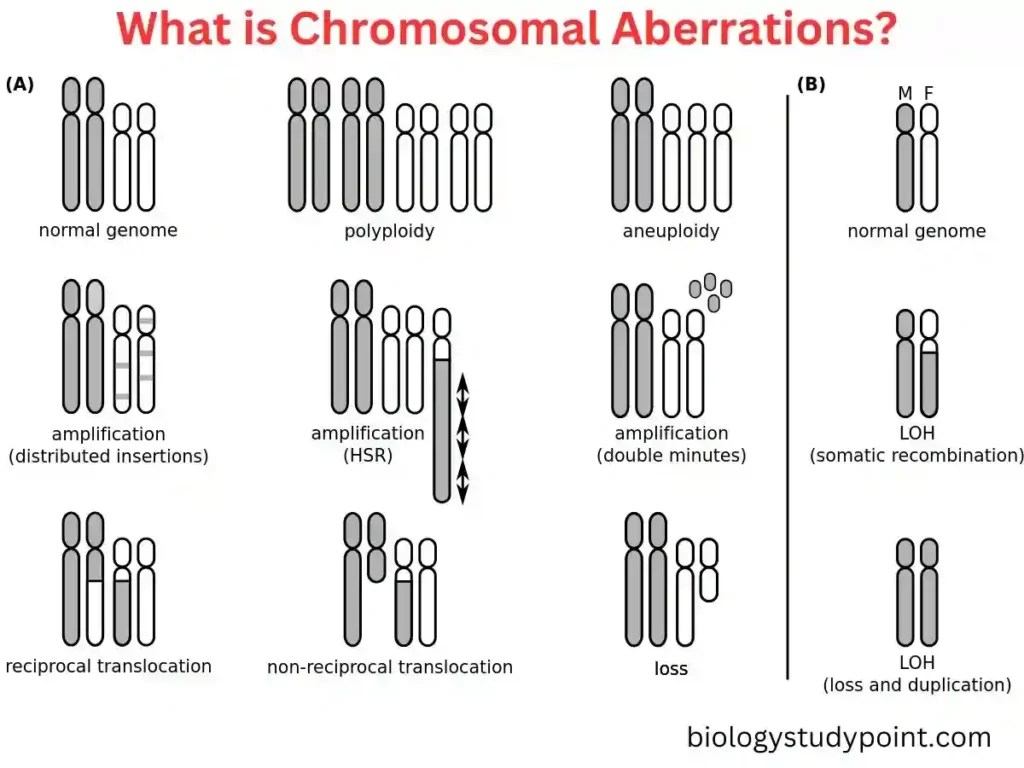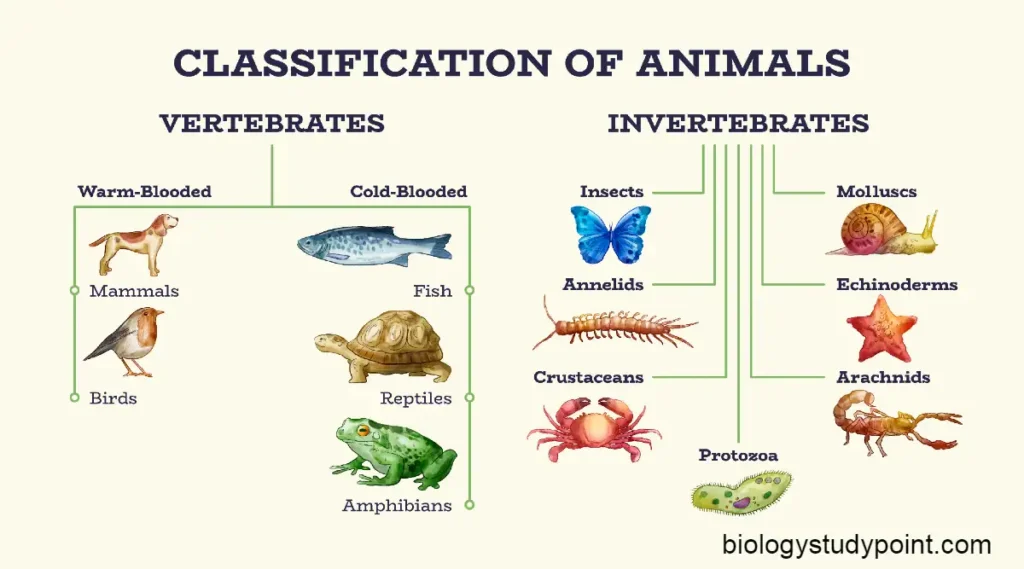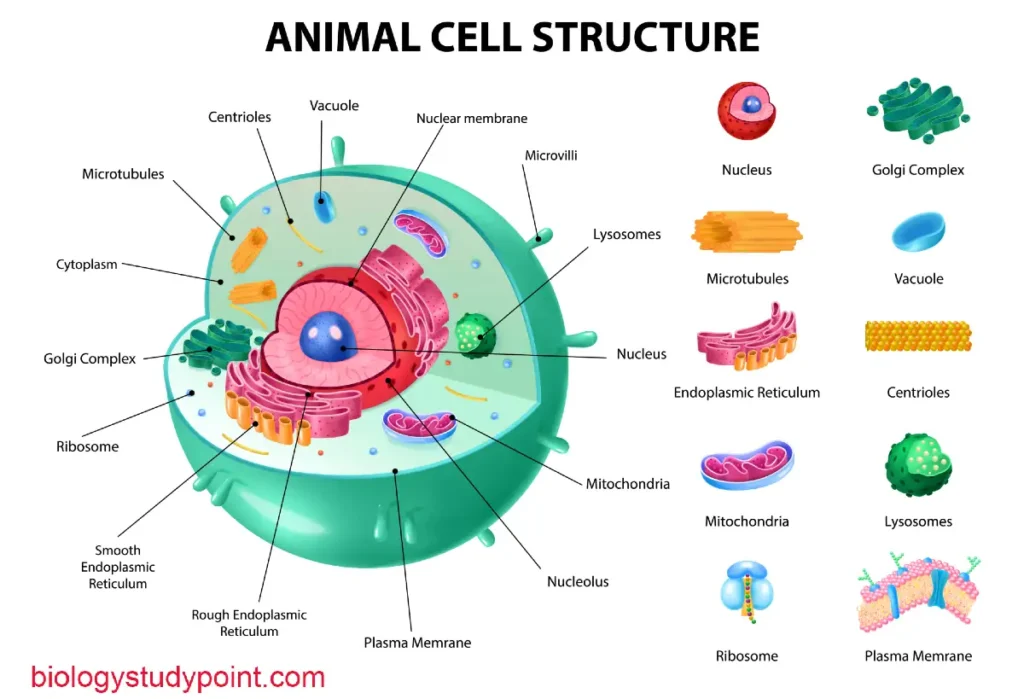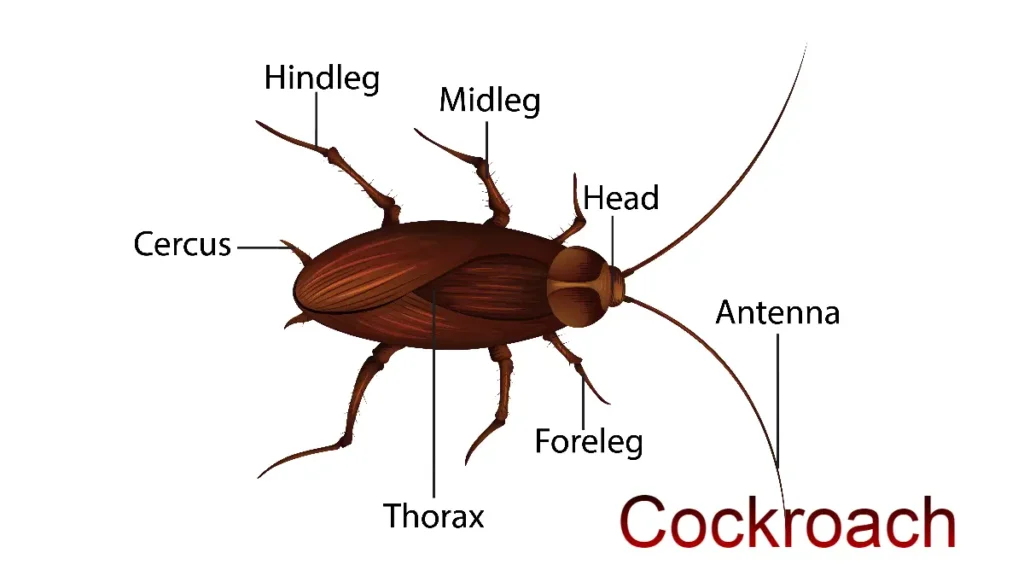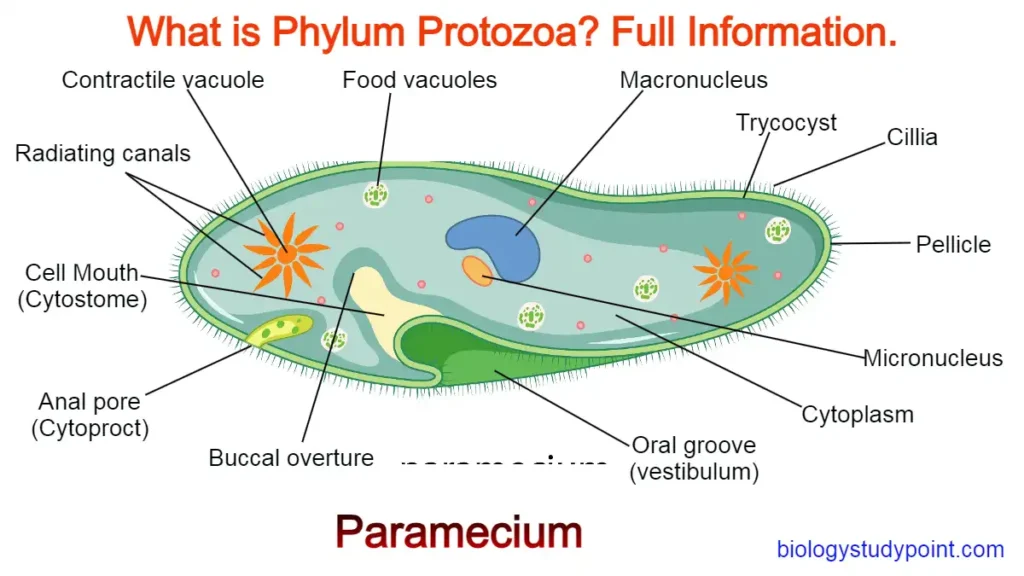Hello, guys, In today’s this article we will study about Chromosomal aberrations. Like – what are Chromosomal aberrations? Causes of chromosomal aberrations, We will know the answers to many such questions today, so let’s start.
What are chromosomal aberrations?
Chromosomal aberrations are visible changes in the structure of chromosomes. These include changes either in the number or in the arrangement of genes in a chromosome. These are also called structural aberrations.
They mainly occur during reduction division.
Causes of chromosomal aberrations –
Chromosomal aberrations are produced due to chromosome breakage and irregularities in the rejoining of broken pieces. Breaks in the chromosomes can be induced by radiation (X–rays, gamma rays, –rays, chemical mutagenic agents like insecticides, herbicides, base analogies and by several viruses. Some genes also induce chromosome breakage.
Structural changes in chromosomes –
1. Change in the number of genes –
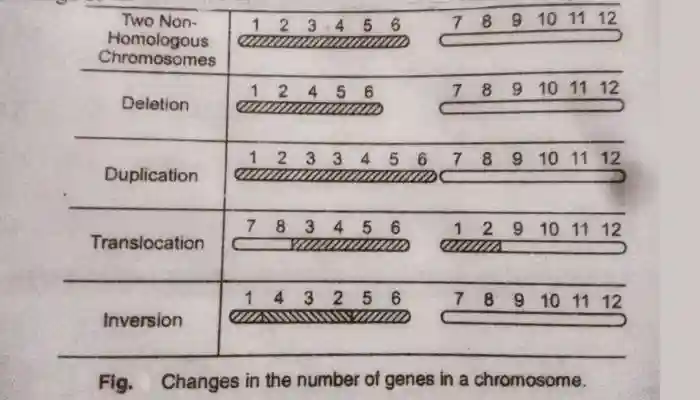
- Deficiency or deletion – It is loss of one or more genes due to breakage of chromosome and loss of broken segment.
- Duplication – it is addition of one or more genes, as a result of which the organism carries the genes repeated in its haploid chromosome complement.
Change in the Arrangement of Genes –
Translocation – it is exchange of parts between nonhomologous chromosomes to form new chromosomes.
Inversion – It involves rotation of a block of genes by 180 degree within a chromosome.
What is translocation in biology?
Translocation involves the transfer of a part of a chromosome to another position in the same chromosome or another chromosome. It results in a change in the sequence and position of genes.
What are the types of translocation?
Depending upon which part of a chromosome a part of non-homologous chromosomes become detached and reunited, the translocation can be.
- Nonreciprocal Translocation – In this type of translocation, a block of genes or a chromosome segment shifts from one chromosome to some nonhomologous chromosome. This may be.
- Simple Translocation – In such cases, a small segment of a chromosome is added to the end of another nonhomologous chromosome. This type of translocation is very rare in nature and is caused by a single break in one chromosome only.
- Shift Translocation – In Shift translocation, an interstitial segment of one chromosome is broken off and is inserted within the break in another non-homologous chromosome. Thus, it involves three breaks, two in one chromosome and one in a nonhomologous chromosome.
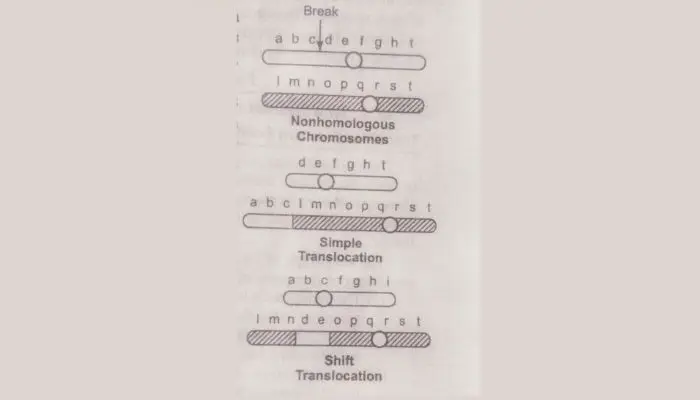
2. Reciprocal translocation – It is the exchange of parts between nonhomologous chromosomes, as for example, exchange of segments between 2nd and 3rd chromosomes of Drosophila is reciprocal translocation. These are most frequent and are produced by a single break in each of the two nonhomologous chromosomes. Reciprocal translocation are of two types.
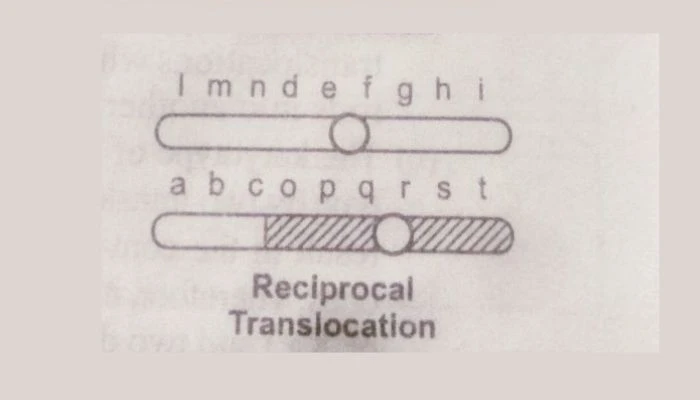
- Homozygous reciprocal, in which both the homologous chromosomes of one pair exchange parts with the two homologous of another pair.
- Heterozygous reciprocal, in which only one member of each of the two homologous pairs exchange part.
3. Multiple translocation – In multiple translocation, more than two pairs of nonhomologous chromosomes exchange parts; this has been studied in Drosophila and Oenothera.
Significance of Translocation –
Translocation are of common occurrence and have played an important role in the introduction of genetic polymorphism in the populations and origin of new species. Translocation has been studied in Drosophila, Oenothera and maize. In man, translocation between 15 and 21 chromosomes results in 21 trisomy and causes Down’s syndrome.
What is the formation of new species?
Translocation and Formation of new Species –
Translocation has played a significant role in the evolution of new species in both plants and animals. It has been thoroughly studied in maize and evening primrose in plants and in Drosophila and some arthropods in animals. Translocation has led to changes in the number of chromosomes by centric fusion.
The karyotype of Drosophila virilis represents the ancestral complement, consisting of five pairs of rod-shaped and one pair of dot-like chromosomes.
- The translocation between the X-chromosome and 5th pair of autosomes has given rise to the chromosome complement found in D. pseudoobscura and D. persimilis having a pair of V-shaped X-chromosomes and three pairs of rod-like and a pair of dot-like autosomes.
- The karyotype of D. willistoni has been derived by two more translocation, which result in the combination of two of the autosomal rods into another C-shaped autosome.
- The karyotype of D. Melanogaster is derived from the presumed ancestral type by two translocation between 2nd, 3rd and 4th, 5th chromosomes (XX or XY) and two dot-like chromosomes.
Among plants, Blakeslee and his collaborators have studied evolution of races of Datura stramonium, the Jimson weed.
What are inversions?
In inversion, the number of genes in a chromosome is not changed, but the sequence of genes is altered by the addition of a gene block within a chromosome by 180°.
Origin of Inversion –
Inversion arises two breads in the chromosome and reunion of interstitial segment after it has rotated by 180°. Inversion can also arise when a chromosome becomes folded on to itself, and the two breaks may be located together. The four broken ends thus produced undergo reunion with exchanged ends.
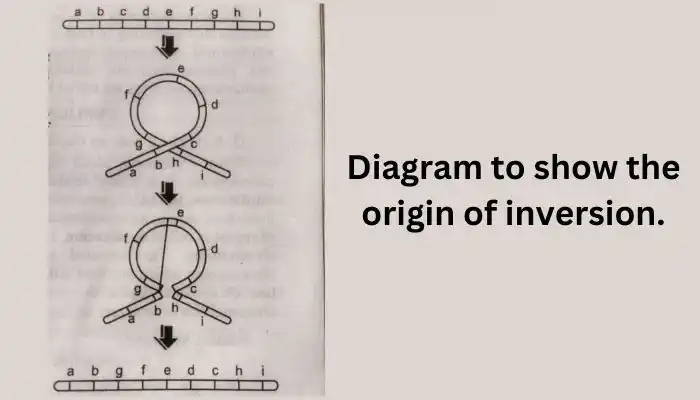
Types of Inversion –
Inversion are of two types.
- Paracentric Inversion – When both the breaks in the chromosome during inversion occur on the same side of the centromere, the inversion is known as paracentric. The inverted segment of chromosome is without a centromere. If paracentric inversion occurs singly, i.e. on one side of the centromere alone, it is known as intraradial or homobrachial imversion. On the other hand, when two paracentric inversions occur one on either side of the centromere, the inversion is known as inter-radial or heterobrachial inversion.
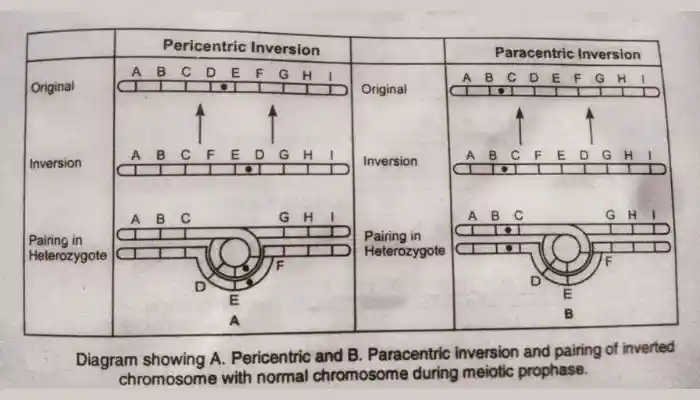
2. Pericentric Inversion – In pericentric inversion, the inverted segment contains the centromere, i.e., it involves one break on either side of the centromere.
Inversion occurring in a single chromosome is called chromosomal, whereas that occurring in both the members of a homologous pair is called allelosomal. Allelosomal inversions occurring in the homologous arms of the two chromosomes are called allelobrachial, but those occurring in nonhomologous arms are called heterosomal.
What is duplication in biology?
When a particular block of genes is represented more than once in a chromosome, it is called repeat and the phenomenon of repeat is called duplication.
In Figure Gene, when a particular block of genes is represented more than once is a chromosome, it is known as repeat and the phenomenon of repeat is called duplication.
In figure 2, genes de are represented twice in a chromosome. The repeated section might have come from another chromosome which suffered a deletion. Duplications are more frequent and less deleterious. These do not lower the viability, but do result in abnormalities of structure or function.
Normal Sequence –
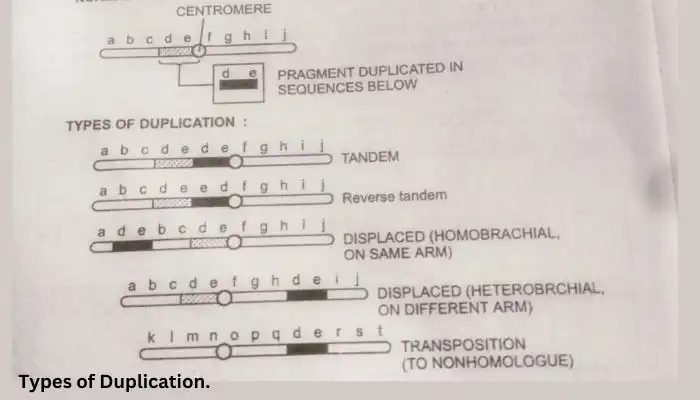
Types of Duplication –
Based on the location of the duplicate segment in the chromosome, duplication can be of the following four types.
- Tendem duplication – The repeated segment lies next to the original sequence and has genes in the same sequence.
- Reverse tendem duplication – The repeated segment lies next to the original sequence but with reverse gene sequence in the duplicate segment.
- Displaced duplication – The repeated segment lies in some other part of chromosome. It may be.
- Homobrachial displaced duplication – The duplicate segment lies in the same arm of the chromosome which has the original gene sequence.
- Heteribrachial displaced duplication – The duplicate segment lies in the arm different from the arm having original sequence.
- Transposition duplication – The repeated chromosome segment lies in some nonhomologous chromosome.
Origin of Duplication –
Duplication can arise in either of the two ways.
- By unequal breakage of homologous chromosomes and exchange and reunion of broken segments.
- By unequal crossing over between nonsister chromatids of two homologous chromosomes when they pair during meiosis.
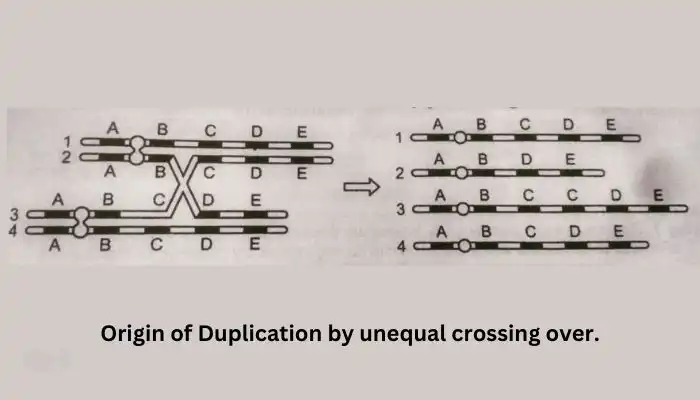
Significance of Duplication –
- Duplications do not produce as drastic or lethal effect as deletions. But some duplications produce harmful phenotypic effect, e.g. bar eye character in Drosophila and Down’s syndrome in human beings.
- Duplications provide additional copies of genes, which can modify through mutation and assume new functions. These provide opportunity for lethal genes to get modified into tolerable or beneficial ones. Duplications can overcome the effect of deletion.
What is Deletion or Deficiency?
Deletion is due to the loss of chromosomal material due to breakage of the chromosome segment. Loss of chromosome segment occurs when a portion of chromosome gets detached and the broken segment without is lost.
Depending upon the length of lost segments from the chromosome, the loss of genes may vary from one to several genes. When there is loss of a terminal segment, it is called deficiency, whereas loss in the intermediary position of a chromosome is designated by deletion.
Types of Deletion –
Deletions are of two types.
- Terminal Deletion – When the lost segment is terminal with telomeric end, the deletion is terminal
- Intercalary or Interstitial Deletion – In intercalary deletion, the lost segment is without telemeric ends and in intercalary.
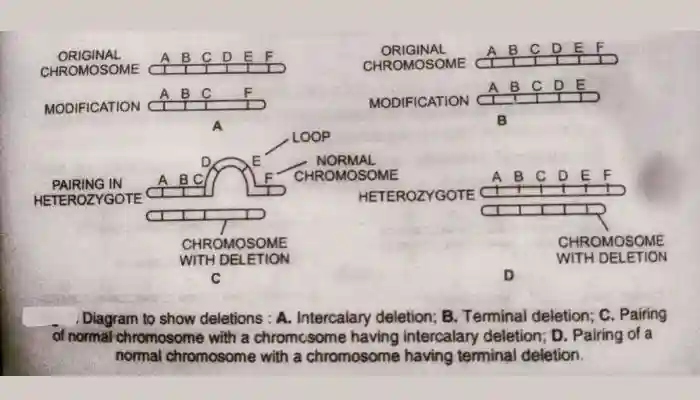
The chromosome with the loss of telomeric end becomes unstable and tends to fuse with a similar damaged end. So, the deficiencies which have established in the populations are either intercalary or terminal deletions, capped by very small telomeres.
What is pseudodominance?
In deficient chromosomes, a recessive allele behaves like a dominant allele. It is called pseudodominance. This phenomenon is observed in deficiency heterozygotes. It is utilized for location of genes on specific chromosomes in Drosophila, maize, etc.
When a recessive homozygous parent (abc/abc) is pollinated by a dominant parent (ABC/ABC), a heterozygous individual (ABC/abc) is produced in F1 generation which expresses only dominant characters.
If pollen with dominant alleles ABC is irradiated with X-rays, a deletion may be induced, leading to expression of pseudodominant by one or more recessive alleles. In such individuals during meiosis, the deficiency heterozygote produces a loop at pachytene stage, indicating the location of the gene. This method helps in locating the genes.
What is polyploidy definition?
Polyploidy is and increase in chromosome number by the addition of one or more sets of chromosomal genome of an organism. It means a polyploid organism possesses one or more haploid sets of complete genome in addition to its diploid sets.
Significance of Polyploidy –
- It increases the size and vigor of the plant, and also increases the size of fruits and pollen.
- It increases the vitamins, alkaloids and sugar contents of beet.
- Furthermore, it leads to changes i the season of blooming and fruiting and annual plants into perennial plants.
- It tells how new species have arisen by crosses between two species. It can be used in propagating crops which are valued for vegetative organs.
- New varieties of plants for the improvement of crops are obtained in terms of resistance to diseases, higher field and better quality.
Types of Polyploids –
Polyploids are of two types.
- Autopolyploids
- Allopolyploid.
What are Autopolyploids or Autoploids?
Autopolyploids have the single genome repeated more than twice. They arise by duplication of same chromosome complement. If the haploid genome of a species is represented by A, a diploid will have AA, an autotriploid AAA and an autotetraploid will have AAAA genome.
Origin of Autopolyploids –
- The autopolyploid could arise in any of the following ways.
- By the union of diploid gametes produces in the absence of meiosis or due to abnormal meiosis (autotetraploid).
- By somatic doubling of the chromosomes in a diploid zygote due to disruption of spindle formation during mitosis. (Autotetraploid).
- By the union of a haploid gamete with the diploid gamete (autotriploid)
- By a cross between a tetraploid and a diploid parent (autopentaploid).
- By fertilization of an egg with two sperms. (autotriploid).
Autopolyploids are induced by treatment with colchicine in banana, datura, potato, coffee, etc.
What is allopolyploids or Alloploids –
Allopolyploids have two or more distinct genomes. They are formed by the multiplication of chromosome sets of a hybrid of two diploid species. For example, an allotetraploid between two species A and B will be formed if a F1 hybrid (AB) of these two species undergoes chromosome doubling or produces diploid gametes.
Usually, the hybrids between two species are sterile because unrelated chromosomes do not pair during prophase or meiosis. Very rarely, both the sets of chromosomes of the hybrid enter one gamete cell, producing diploid gametes.
Such diploid gametes on fertilization produce allotetraploids. In some cases, the diploid cell of the hybrid, on the onset of mitotic division, undergoes chromosome doubling but does not divide. Such a cell is tetraploid. If it happens in the zygote, an allotetraploid organism develops.
Polyploid arising following hybridization are called amphiploids. Nearly half of all angiosperm species are thought to be polyploids. Genome of amphiploids can be AABB (allotetraploid) or AAAABB or AABBCC (Allohexaploids).
Example – Raphnobrassica is the first known allotetraploid. It is a hybrid of Raphanus sativus (reddish) and Brassica oleracea, (cabbage). Clausen and Goodspeed (1927) Hybridized Nicotiana glutinosa (2x = 24) and Nicotiana tabacum (2x = 72). From chromosome doubling of the F1 progeny, a new species, N. digluta, originated by the fertilization of diploid gametes of the F1 hybrid.
Conclusion –
So friends, in today’s article we have studied what are Chromosomal aberrations? Friends, if you like this article, then please comment, share and tell your suggestions and our mistakes.
Thank you so much
